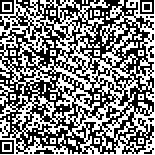| 摘要: |
| [摘要] 目的 探讨经内镜逆行胰胆管造影联合腹腔镜术治疗胆总管结石伴胆囊结石的效果及安全性,并检测血总胆红素(TBIL)、尿胰蛋白酶原-2及C反应蛋白(CRP)水平变化。方法 选择该院2016-10~2017-02胆总管结石伴胆囊结石患者138例,随机分为对照组和研究组各69例,对照组采用开腹胆囊切除术进行治疗,研究组采用经内镜逆行胰胆管造影联合腹腔镜手术进行治疗。观察两组患者手术情况、临床疗效及术后不良反应发生情况,并检测术后TBIL、尿胰蛋白酶原-2和CRP水平变化。结果 研究组切口大小、术中出血量、手术时间、术后排气时间和住院时间分别为(2.86±0.79)cm、(42.33±9.86)ml、(71.73±10.24)min、(18.93±2.54)h和(9.47±1.65)d,均优于对照组的(6.92±1.03)cm、(75.21±10.17)ml、(98.46±11.58)min、(27.61±2.85)h和(14.39±2.07)d,差异有统计学意义(P<0.01)。研究组患者术后应用镇痛剂例数占13.04%(9/69),而对照组占63.77%(44/69),两组比较差异有统计学意义(P<0.01)。两组术后并发症和残余结石发生率比较差异无统计学意义(P>0.05)。研究组术后TBIL、尿胰蛋白酶原-2和CRP分别为(62.40±18.37)μmol/L、(30.61±6.44)ng/ml和(247.39±26.15)mg/L,低于对照组的(74.56±16.28)μmol/L、(36.98±7.35)ng/ml和(316.74±29.61)mg/L,差异有统计学意义(P<0.01)。结论 经内镜逆行胰胆管造影联合腹腔镜术治疗胆总管结石伴胆囊结石能够有效清除结石,具有创伤小、术后恢复快等优点,值得临床推广应用。 |
| 关键词: 经内镜逆行胰胆管造影 腹腔镜术 胆总管结石伴胆囊结石 临床疗效 血总胆红素 尿胰蛋白酶原-2 C反应蛋白 |
| DOI:10.3969/j.issn.1674-3806.2018.02.15 |
| 分类号:R 657.4+2 |
| 基金项目: |
|
| Clinical effect of endoscopic retrograde cholangiopancreatography combined with laparoscopy on treatment of common bile duct stones with gallstones |
|
HE Feng, XING Cheng, FENG Shi-lin, et al.
|
|
Department of General Surgery, the People′s Hospital of Jiuquan City, Gansu 735000, China
|
| Abstract: |
| [Abstract] Objective To explore the operation efficacy and safety of endoscopic retrograde cholangiopancreatography combined with laparoscopic in treatment of common bile duct stones with gallstones, and to detect the levels of serum total bilirubin(TBIL), urinary trypsinogen-2 and CRP.Methods 138 patients with common bile duct stones with gallstones were selected in our hospital from October 2016 to February 2017, and were randomly divided into the control group(n=69) and the study group(n=69). The patients in the control group were treated with open cholecystectomy and the patients in the study group received endoscopic retrograde cholangiopancreatography combined with laparoscopic surgery. The surgical conditions, clinical efficacy and postoperative adverse reactions, and the levels of postoperative TBIL, urinary trypsinogen-2 and CRP were observed and compared between the two groups.Results The average incision size, intraoperative blood loss, operation time, postoperative exhaust time and hospital stay time in the study group were superior to those in the control group[(2.86±0.79) vs (6.92±1.03)cm, (42.33±9.86) vs (75.21±10.17)ml, (71.73±10.24) vs (98.46 ± 11.58)min, (18.93±2.54) vs (27.61±2.85)h and (9.47±1.65) vs (14.39±2.07)d](P<0.01). The rate of using analgesics in the study group(13.04%) was significantly lower than that in the control group(63.77%)(P<0.01). There were no significant differences in the incidence rates of postoperative complications and residual stone between the two groups(P>0.05). The levels of TBIL, urinary trypsinogen-2 and CRP in the study group were significant lower than those in the control group[(62.40±18.37) vs (74.56±16.28)μmol/L, (30.61±6.44) vs (36.98±7.35)ng/ml and (247.39±26.15) vs (316.74±29.61) mg/L](P<0.01).Conclusion Endoscopic retrograde cholangiopancreatography combined with laparoscopic is effective in treatment of common bile duct stones with gallstones. It can effectively remove the stones, and has the advantages of less trauma and faster recovery. |
| Key words: Endoscopic retrograde cholangiopancreatography Laparoscopic surgery Choledocholithiasis with gallstones Clinical efficacy Total bilirubin Urinary trypsinogen-2 C-reactive protein(CRP) |

